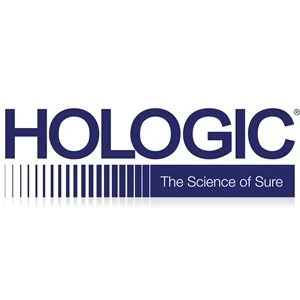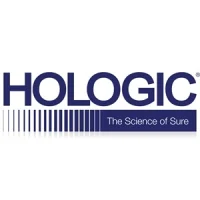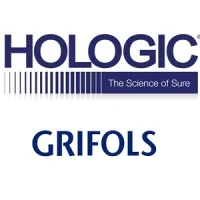Breast tomosynthesis exams, Hologic calls the exams 3D MAMMOGRAPHY, have shown to be an advance over digital mammography, with higher cancer detection rates and fewer patient recalls for additional testing
The new Affirm prone system, which was installed for the first time in Europe earlier this year, is widely considered one the most significant advance in biopsy technology since the first prone biopsy system was introduced more than 20 years ago. It uses the same proven detector technology as the Hologic Selenia® Dimensions® breast tomosynthesis system, a top selling breast cancer screening and diagnostic system in the U.S. and in many other countries around the world. With a significantly larger field of view than the MultiCare® Platinum system, along with its translucent paddles, the new prone system is designed to deliver exceptional 2D and 3D images and better target lesions found during 3D MAMMOGRAPHY exams, as well as other screening modalities. In addition, the Affirm prone system allows full 360° access to the breast to accommodate most lesion locations. Users can go from a standard to lateral needle approach in seconds to accelerate procedures and ensure reaching targeted lesions.
Doctors in Spain report handling complex biopsies that they were only able to see with breast tomosynthesis imaging with the new system
As Doctor Tejerina, a radiologist with the Centro de Patologia de la Mama, Tejerina Foundation, in Madrid, Spain, reports, feedback from the first wave of patients is very positive. “We have been suffering to handle complex biopsies of subtle lesions like faint calcifications or distortions that we were only able to see on 3D images,” Dr. Tejerina says. “Older breast biopsy systems are restricted to 2D imaging with a narrow window for targeting the lesions. Often they require multiple X-ray exposures to find and position the suspect tumor for the biopsy needle. With tomosynthesis imaging on the new Affirm prone system, there is a much wider field of view. So the biopsy device can be positioned anywhere in a 360-degree circle, and areas of suspicion seen only with 3D imaging can be easily biopsied.”
Dr. Tejerina also notes that with the previous Hologic biopsy table, the tube head of the biopsy device had to be positioned manually. "The new system does this for us automatically, which saves time,” he says. “The software really streamlines our workflow, so the procedure goes faster.” And he adds, the Affirm Prone table, with its translucent paddles and wider detector, "helps us see lesions in the first scout and significantly reduce the number of images needed to get to the lesion.”
Dr. Tejerina (second from left) and his colleagues at Fundación Tejerina in Madrid were the first to install the Hologic Affirm prone biopsy system in Spain.
The Centro de Patologia de la Mama, Tejerina Foundation has been leading the way in women’s breast health for over 40 years. In 1997, the Centre was first center in Spain to install a stereotactic guided prone biopsy table. In 2010 the Centre installed a Hologic Selenia Dimensions breast tomosynthesis system, the first site in Spain to use the innovative technology. In 2010 the Centre was also the first site in Spain to combine the Hologic Affirm™ upright biopsy system with the Hologic tomosynthesis system. And now, in 2016, the Centre is one of the first sites in the world to offer prone biopsies on the new Affirm system from Hologic.
Doctors in the Netherlands say Affirm system is fast and comfortable for patients
Dr. Henebiens, a radiologist at Spaarne Gasthuis Hospital in Hoofddorp—the first Affirm prone user in the Netherlands—commented on how fast doctors can do a procedure on the Affirm system and how comfortable the new system is for patients.
“We make fewer exposures on the new Affirm prone system, compared to the older MultiCare Platinum table,” she notes. “And because the table uses 3D technology, we use fewer steps getting to the target and getting biopsies."
Dr. Margot Henebiens
(seated) and four devoted radiology techs Spaarne Gasthuis Hospital
in the Netherlands were early adopters of the new prone biopsy system.
Dr. Henebiens also likes how easy it was to get up to speed on the table. “The learning curve for the new table was very fast. Training was scheduled for two days, but in one day, the staff knew how to use it.”
The Spaarne Gasthuis Hospital staff have completed over 60 procedures on the table in their first 7 months of use.
Doctors in Spain reports faster and lower patient dose biopsies with the new system
Doctor Gianfranco Scaperrotta, Chief of the Breast Imaging and Interventional Radiology at Fondazione IRCCS Istituto Nazionale dei Tumori (INT) in Milano, Italy was an early adopter of the Affirm prone system.
INT was the first site in Italy to install the Affirm prone system. Dr. Scaperrotta (second from left) is Chief of Breast Imaging and Interventional Radiology.
“The Affirm prone system is a quick, effective and easy to use system,” he says. “The image quality is high, comparable to the Hologic Selenia Dimensions digital mammography system. Workflow is quick thanks to a dedicated workstation and the system’s fully integrated C-arm and automated tube-head. Procedures are faster and safer with the new system thanks to the programmed needle parameters and automated calculations such as the display of safety margins and relative distance in real time.”
After 73
procedures on the new system, INT has seen a 20% reduction in the time needed
for performing a biopsy (patient time under compression) and approximately a
50% drop in the mean glandular patient dose when they compare the new system to
the older Hologic system.
The Fondazione
IRCCS Istituto Nazionale dei Tumori is the largest oncology site in Lombardia,
the
most populous region in Italy. The research and cancer treatment site draws
patients from throughout Italy.
In sum, doctors at the first three European Affirm prone install sites report that the new system offers significant benefits to the patient, the doctor and the technologist. No wonder Hologic says the Affirm prone system is the most significant advance in biopsy technology since Hologic introduced the first prone biopsy system more than 20 years ago.
Source & Image Credit: Hologic










